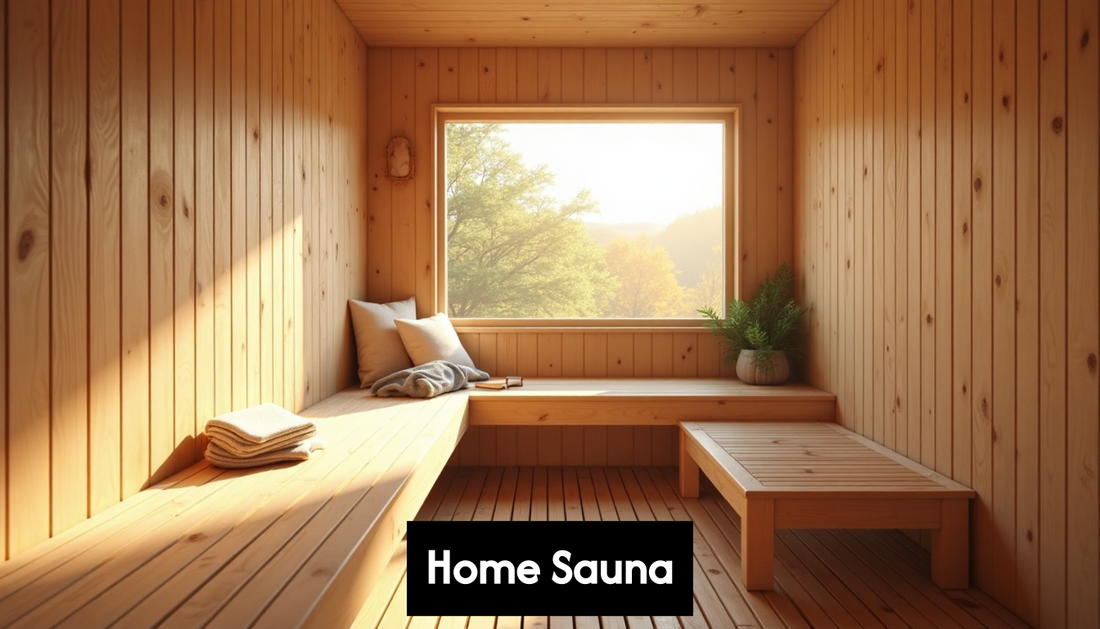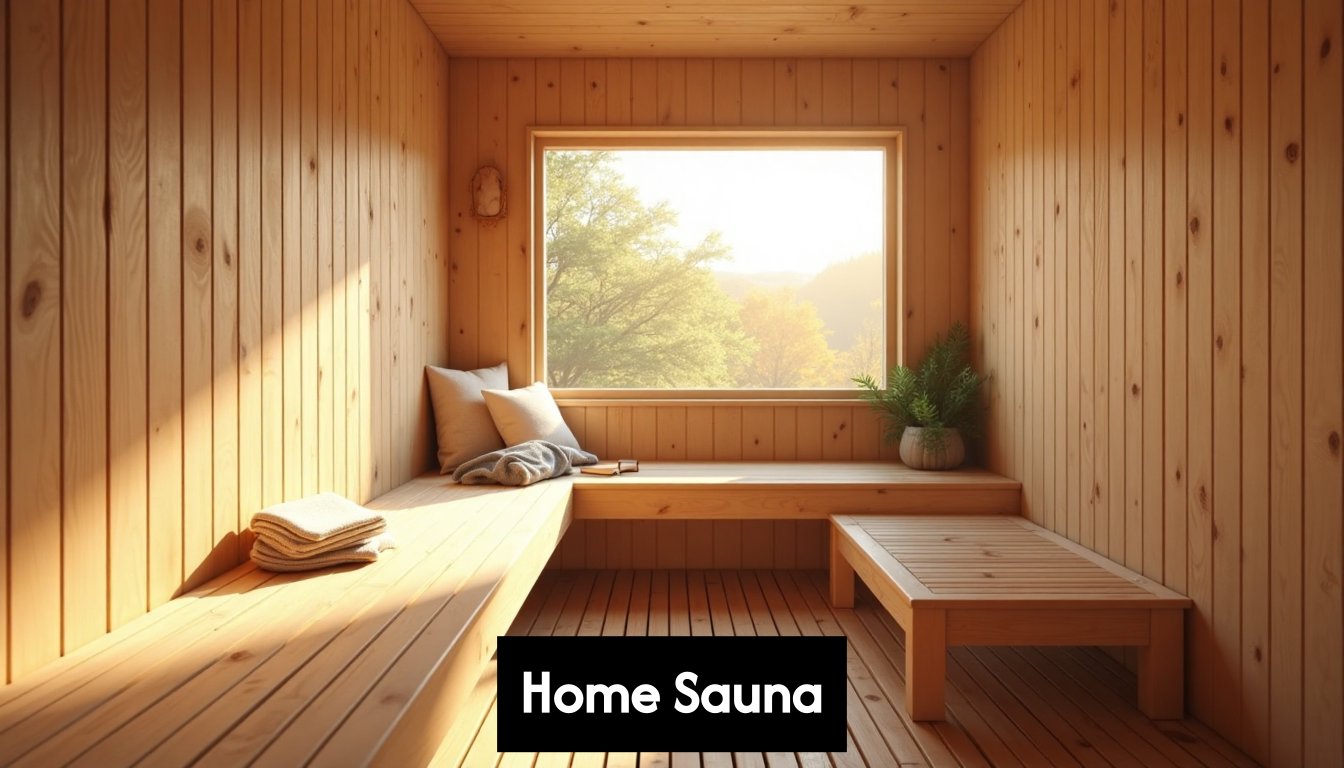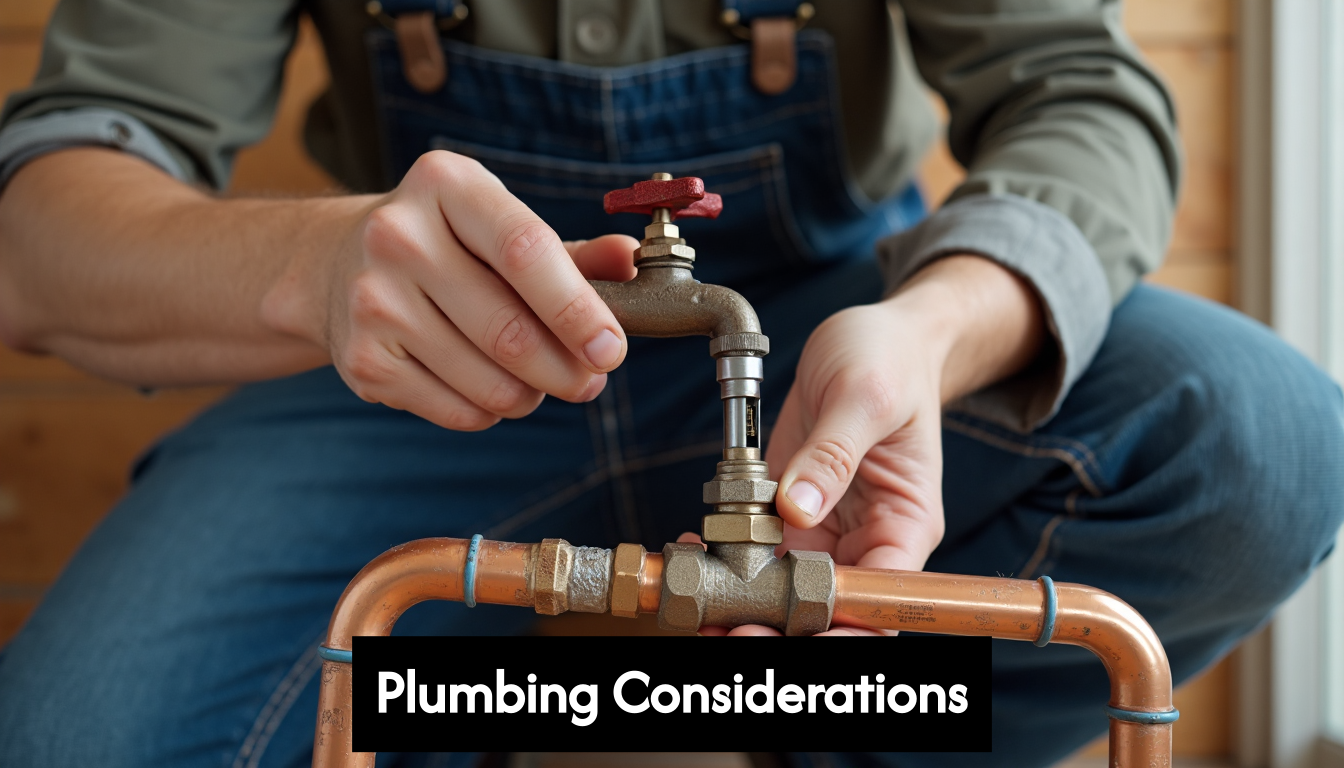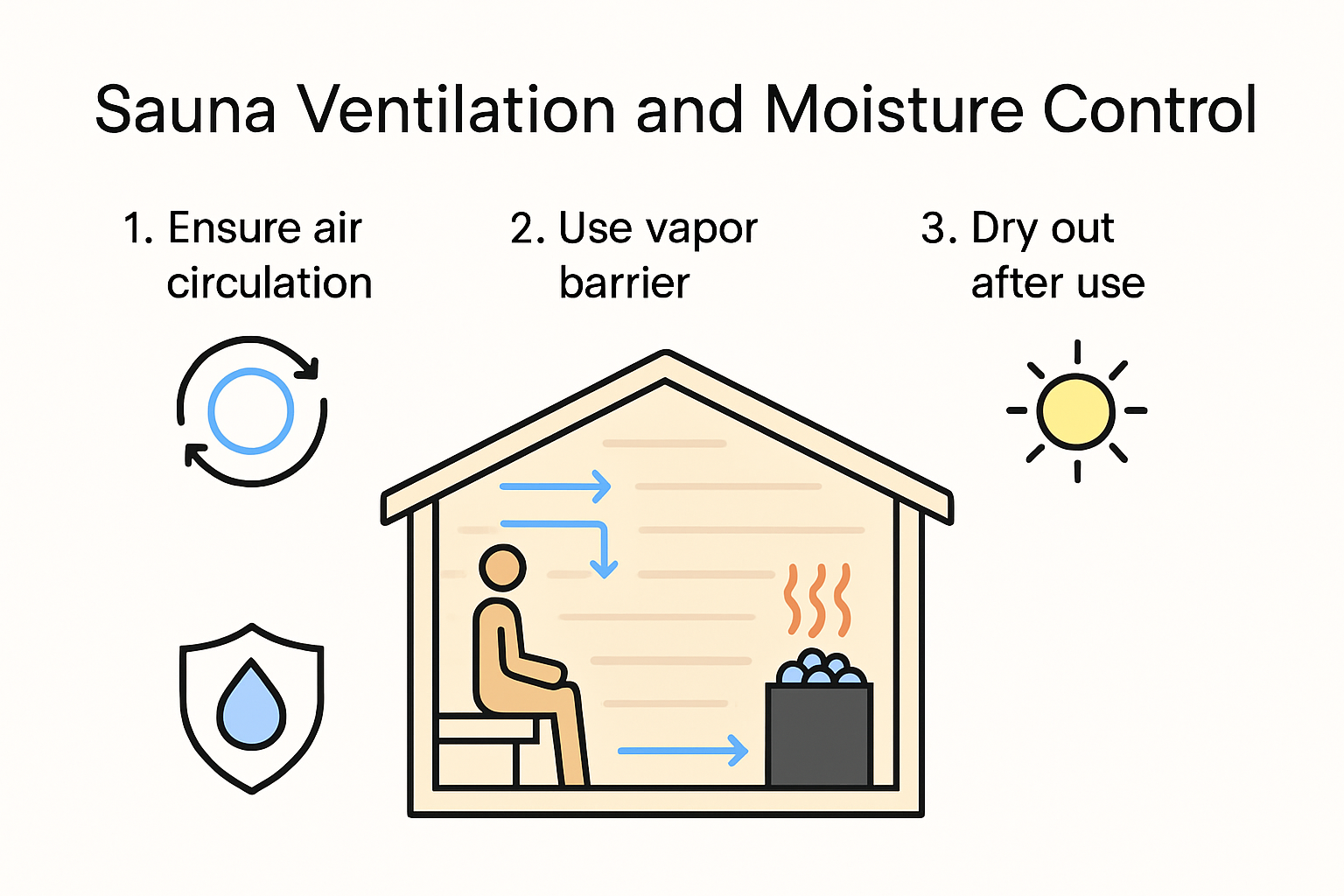
Uncommon Challenges of Home Sauna Installation
 Installing a home sauna can be a rewarding endeavor, promising a private retreat for relaxation and well-being. However, that promise comes with a host of hidden challenges that can leave even the most well-intentioned homeowners feeling overwhelmed. Did you know that improper venting alone can lead to mold growth and structural damage? It’s a shocking twist for those who think the installation process is straightforward. The truth is that navigating electrical, plumbing, and ventilation issues often requires professional guidance to ensure safety and compliance. Dive in to uncover the secrets to a successful home sauna installation that you might not have considered.
Installing a home sauna can be a rewarding endeavor, promising a private retreat for relaxation and well-being. However, that promise comes with a host of hidden challenges that can leave even the most well-intentioned homeowners feeling overwhelmed. Did you know that improper venting alone can lead to mold growth and structural damage? It’s a shocking twist for those who think the installation process is straightforward. The truth is that navigating electrical, plumbing, and ventilation issues often requires professional guidance to ensure safety and compliance. Dive in to uncover the secrets to a successful home sauna installation that you might not have considered.
Table of Contents
- Planning Your Sauna Space
- Navigating Electrical And Plumbing
- Ventilation And Moisture Control Issues
- Post-Installation Considerations
Quick Summary
| Takeaway | Explanation |
|---|---|
| Assess Your Space Carefully | Ensure your chosen sauna location meets height and ventilation requirements before proceeding with installation. Common choices include basements and spacious bathrooms. |
| Professional Assistance is Essential | Electrical and plumbing installations require licensed professionals to ensure safety and compliance with local codes, significantly reducing the risk of hazards and future repairs. |
| Prioritize Ventilation and Moisture Control | Implementing a strategic ventilation design is crucial to prevent mold growth and structural damage, ensuring a healthy sauna environment. |
| Ongoing Maintenance is Key | Regular inspections and maintenance keep your sauna in peak condition, addressing potential issues before they escalate and enhancing long-term performance. |
Planning Your Sauna Space
Designing the perfect home sauna requires careful consideration of multiple factors that go beyond simple aesthetics. The challenges of home sauna installation begin with selecting the right location and preparing a space that will support a safe, comfortable, and functional wellness experience.
Assessing Your Available Space
Choosing the ideal location for your home sauna is more complex than simply finding an empty corner. Homeowners must evaluate several critical aspects of their potential sauna area. Sauna Manufacture experts recommend a minimum ceiling height of 2.15 meters to ensure comfortable standing room and proper heat circulation. This requirement immediately eliminates many potential spaces in homes with low ceilings or awkward architectural layouts.
The most suitable locations typically include:
- Basement areas with adequate ventilation
- Dedicated wellness rooms
- Spacious bathrooms with proper moisture control
- Unused spare rooms
- Attached garage spaces with good structural integrity
Structural and Technical Considerations
Beyond space dimensions, the challenges of home sauna installation involve complex technical requirements. Electrical work stands as a significant hurdle, with most home saunas demanding specialized wiring and dedicated circuits. Proper electrical infrastructure is non-negotiable for safe and efficient operation. Local building codes often mandate professional electrical inspections, adding another layer of complexity to the installation process.
Research from Home Business Magazine highlights that ventilation represents a critical yet frequently overlooked aspect of sauna planning. Inadequate airflow can lead to moisture accumulation, potentially causing:
- Mold growth
- Structural damage
- Compromised sauna performance
- Potential health risks
Preparing for Installation Challenges
Successful home sauna installation requires comprehensive preparation. Homeowners must create a moisture-resistant environment with appropriate flooring, insulation, and ventilation. Cold flooring materials and potential floor drainage systems become essential considerations, especially for larger sauna configurations.
Pre-installation planning should include:
- Detailed measurements of the intended space
- Professional assessment of electrical and ventilation requirements
- Verification of local building permits and codes
- Budget allocation for potential structural modifications
Understanding these intricate details transforms the sauna installation from a potential nightmare into a manageable home improvement project. By anticipating the challenges of home sauna installation and approaching the process methodically, homeowners can create a personal wellness sanctuary that provides years of relaxation and health benefits.
Navigating Electrical and Plumbing
The challenges of home sauna installation reach their peak when dealing with electrical and plumbing requirements. These technical aspects demand precision, professional expertise, and a thorough understanding of safety regulations that go far beyond typical home improvement projects.
Electrical Infrastructure Essentials
Electrical work represents one of the most complex challenges of home sauna installation. Haven of Heat experts emphasize that sauna electrical systems require specialized considerations. Unlike standard home electrical installations, sauna wiring must be rated for high temperatures and moisture resistance, typically involving 240V dedicated circuits with specific protective measures.
Critical electrical requirements include:
- Dedicated circuit breakers
- Moisture-resistant wiring installed in protective conduit
- Professional installation by a licensed electrician
- Appropriate disconnect switch
- Compliance with local building and electrical codes
For detached sauna structures, Sauna Times recommends implementing a separate grounding electrode system with at least two ground rods. This additional safety measure helps prevent electrical hazards and ensures proper system performance in standalone installations.
Plumbing Considerations For Steam And Wet Saunas
 Plumbing requirements add another layer of complexity to home sauna installations. Steam saunas, in particular, demand careful planning for water sources and drainage systems. Kentwood’s home improvement guide highlights the importance of professional plumbing work to manage moisture and prevent potential structural damage.
Plumbing requirements add another layer of complexity to home sauna installations. Steam saunas, in particular, demand careful planning for water sources and drainage systems. Kentwood’s home improvement guide highlights the importance of professional plumbing work to manage moisture and prevent potential structural damage.
Key plumbing considerations include:
- Reliable water source for steam generation
- Appropriate drainage systems
- Moisture-resistant materials
- Professional installation to prevent leaks
- Compliance with local plumbing codes
Professional Installation And Safety Protocols
The intricate nature of electrical and plumbing work for home saunas makes professional installation non-negotiable. Homeowners must recognize that DIY approaches can lead to significant safety risks, potential code violations, and costly future repairs. A licensed electrician and plumber with specific experience in sauna installations can:
- Ensure proper electrical and water infrastructure
- Identify potential structural challenges
- Recommend optimal equipment placement
- Guarantee compliance with local building regulations
- Provide warranties and professional assurances
While the challenges of home sauna installation might seem overwhelming, careful planning and professional support transform this complex project into an achievable home improvement goal. By understanding the technical requirements and investing in professional expertise, homeowners can create a safe, efficient, and enjoyable personal wellness space that meets all necessary safety and performance standards.
Ventilation And Moisture Control Issues
Ventilation and moisture control represent critical yet often underestimated challenges of home sauna installation. These technical aspects directly impact the sauna’s performance, structural integrity, and user experience, making them fundamental considerations for any successful home wellness space.

Understanding Moisture Dynamics
National Center for Biotechnology Information research reveals that improper ventilation can create a cascade of potential problems. Insufficient airflow leads to excess humidity buildup, which creates an environment conducive to mold growth, wood deterioration, and compromised indoor air quality. Effective moisture management requires a nuanced approach that balances humidity removal with maintaining a comfortable sauna environment.
Key moisture challenges include:
- Preventing condensation on walls and ceiling
- Managing humidity levels
- Protecting structural materials from potential water damage
- Maintaining optimal thermal performance
Strategic Ventilation Design
Professional sauna designers emphasize the importance of strategic vent placement. Moisture control experts warn that poorly designed ventilation systems can create airflow stagnation, limiting effective humidity removal. The optimal ventilation strategy involves carefully positioned mechanical exhaust and intake vents that facilitate continuous air circulation.
Critical ventilation considerations include:
- Lower intake vents for cool air entry
- Upper exhaust vents for humid air extraction
- Balanced airflow to prevent temperature inconsistencies
- Materials that resist moisture absorption
Preventing Long-Term Structural Damage
Beyond immediate comfort, proper ventilation protects your investment by preventing long-term structural issues. Research indicates that incorrect humidity levels can introduce secondary pollutants and chemical interactions that compromise both the sauna’s structure and user safety.
Comprehensive moisture control strategies should address:
- Regular humidity level monitoring
- Appropriate ventilation system calibration
- Use of moisture-resistant materials
- Potential installation of dehumidification systems
- Periodic professional inspections
Homeowners must recognize that ventilation is not a one-size-fits-all solution. Each sauna installation presents unique challenges requiring tailored approaches. Professional assessment becomes crucial in developing a ventilation system that maintains the delicate balance between heat retention, moisture control, and user comfort.
By understanding and proactively addressing ventilation and moisture control challenges, homeowners can create a sauna environment that remains safe, functional, and enjoyable for years to come. The investment in proper design and professional consultation pays dividends through enhanced performance, structural longevity, and an optimal wellness experience.
Post-Installation Considerations
After the complex process of home sauna installation, homeowners must recognize that the journey doesn’t end with the final construction. Post-installation considerations are crucial for ensuring long-term performance, safety, and enjoyment of your new wellness space.
Maintenance and Regular Inspections
Leisure Equipment experts emphasize the importance of ongoing maintenance to preserve your sauna’s functionality and safety. Regular professional inspections become a critical component of responsible sauna ownership, addressing potential issues before they escalate into costly repairs.
Key maintenance priorities include:
- Annual electrical system checks
- Comprehensive ventilation system assessment
- Wood surface treatment and protection
- Seal and insulation integrity evaluation
- Humidity and moisture level monitoring
Optimizing Airflow And Ventilation
Sauna Times engineering analysis reveals that post-installation ventilation optimization is more nuanced than most homeowners realize. Proper exhaust and intake vent positioning is critical for maintaining optimal temperature distribution and air circulation.
Advanced ventilation considerations include:
- High-positioned exhaust vents
- Low-positioned intake vents
- Preventing airflow short-circuiting
- Ensuring adequate convection flow
- Monitoring temperature and humidity variations
Long-Term Performance And Safety Management
Sauna engineering experts recommend a proactive approach to sauna maintenance. This involves creating a comprehensive management strategy that addresses electrical connections, lighting systems, and environmental conditions.
Critical long-term management strategies include:
- Developing a structured maintenance schedule
- Investing in professional periodic assessments
- Keeping detailed maintenance records
- Replacing worn components preemptively
- Adapting to changing performance characteristics
Successful post-installation management transforms your sauna from a simple home improvement project into a lasting wellness investment. By approaching maintenance with diligence and professional guidance, homeowners can ensure their sauna remains a safe, efficient, and enjoyable personal sanctuary for years to come.
Remember that each sauna is unique, and its maintenance requirements will depend on factors like usage frequency, environmental conditions, and initial installation quality. Consulting with sauna professionals and maintaining a proactive approach will help you maximize your investment and enjoy a consistently excellent sauna experience.
Frequently Asked Questions
What are the common challenges faced during home sauna installation?
Common challenges include assessing available space, navigating electrical and plumbing requirements, ensuring proper ventilation and moisture control, and managing ongoing maintenance needs.
Is professional installation necessary for a home sauna?
Yes, professional installation is essential for electrical and plumbing work to ensure safety, compliance with local codes, and to avoid potential hazards and costly repairs.
How do I assess the space for a home sauna?
Start by measuring the intended location to ensure it meets minimum ceiling height requirements (at least 2.15 meters) and assess for proper ventilation. Ideal spaces include basements, wellness rooms, or spacious bathrooms.
What are the ventilation requirements for a sauna?
Adequate ventilation involves strategically placed intake and exhaust vents to promote air circulation, prevent humidity buildup, and protect against mold growth. Regular inspections and adjustments are also crucial for maintaining a healthy environment.
Transform Your Sauna Vision into Reality with Best Life Sauna
Are the challenges of home sauna installation leaving you feeling overwhelmed? Whether it’s navigating complex electrical and plumbing needs or ensuring proper ventilation to prevent mold, installing a sauna is no easy feat. But fear not! At Best Life Sauna, we specialize in providing premium sauna solutions tailored to your wellness journey.

Our diverse selection of infrared, traditional, and outdoor saunas not only addresses your unique space requirements but also comes equipped with all the necessary accessories to create your perfect sanctuary. With features like free shipping on orders over $200 and a price match guarantee, your journey to a peaceful retreat doesn’t have to be complicated. Ready to take the next step? Explore our range at Best Life Sauna and experience the benefits of hassle-free home sauna ownership today! Don’t let the installation worries hold you back—your personal wellness oasis awaits!
Recommended Articles
- Saunas for a Longer Life: The Surprising Health Benefits Backed by Sci – Best Life SaunaBest Life Sauna - Premium Saunas for WellnessAmerican ExpressApple PayDiners ClubDiscoverGoogle PayMastercardPayPalShop PayVisa
- Why a Sauna Makes the Perfect Christmas Gift That Keeps on Giving All – Best Life SaunaBest Life Sauna - Premium Saunas for WellnessAmerican ExpressApple PayDiners ClubDiscoverGoogle PayMastercardPayPalShop PayVisa
- Essential Sauna Installation Tips: 2025 Home Setup – Best Life Sauna
- Best Sauna Temperature 2025: Top Tips for Health Relaxation – Best Life Sauna
- Ultimate Guide to Sauna Investments 2025: Benefits & ROI – Best Life Sauna

